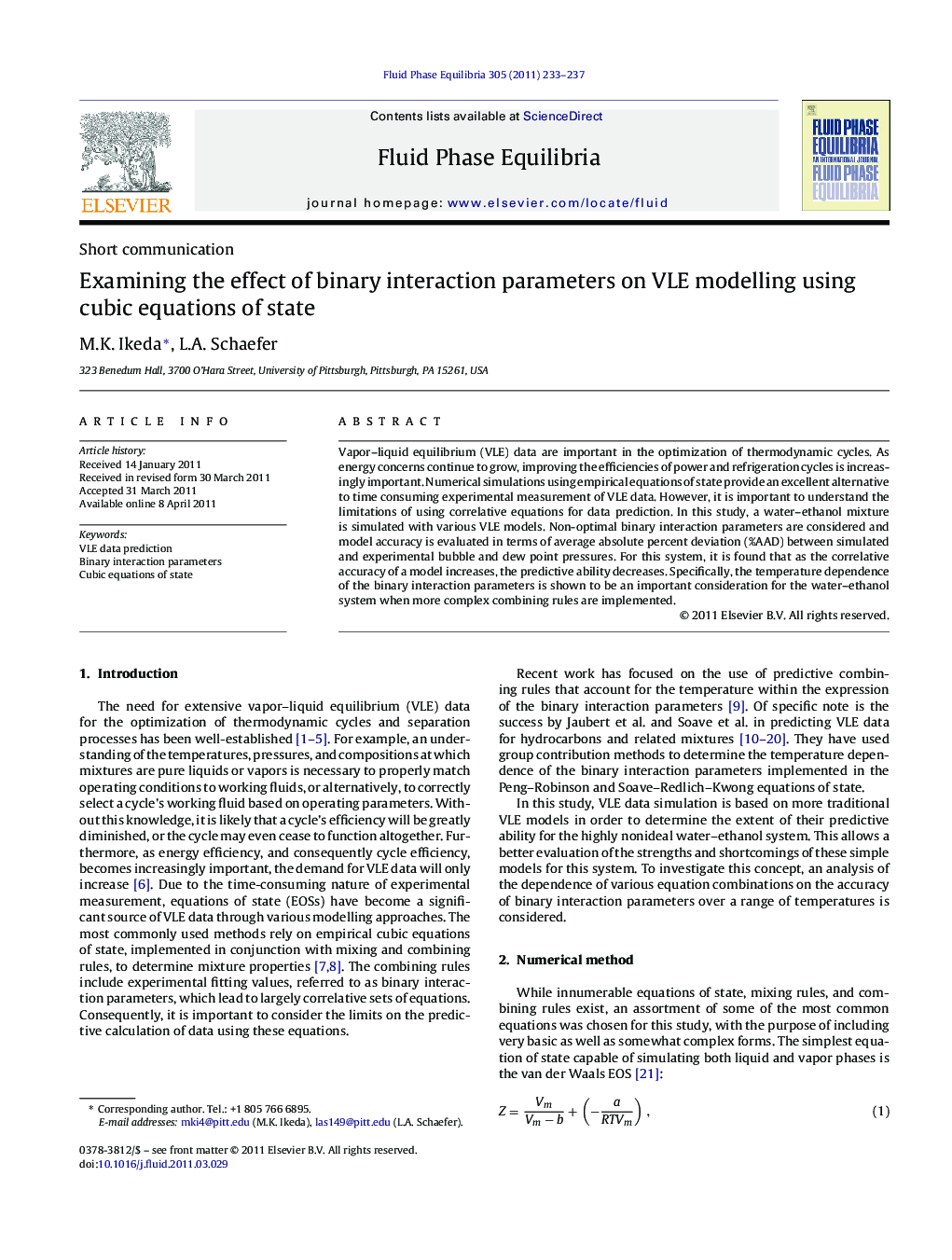| Article ID | Journal | Published Year | Pages | File Type |
|---|---|---|---|---|
| 202393 | Fluid Phase Equilibria | 2011 | 5 Pages |
Vapor–liquid equilibrium (VLE) data are important in the optimization of thermodynamic cycles. As energy concerns continue to grow, improving the efficiencies of power and refrigeration cycles is increasingly important. Numerical simulations using empirical equations of state provide an excellent alternative to time consuming experimental measurement of VLE data. However, it is important to understand the limitations of using correlative equations for data prediction. In this study, a water–ethanol mixture is simulated with various VLE models. Non-optimal binary interaction parameters are considered and model accuracy is evaluated in terms of average absolute percent deviation (%AAD) between simulated and experimental bubble and dew point pressures. For this system, it is found that as the correlative accuracy of a model increases, the predictive ability decreases. Specifically, the temperature dependence of the binary interaction parameters is shown to be an important consideration for the water–ethanol system when more complex combining rules are implemented.
► Numerical simulation of VLE data is considered for a water–ethanol mixture. ► A variety of common empirical VLE models are implemented. ► The influence of binary interaction parameters on predictive ability is studied. ► Predictive accuracy is shown to decrease as correlative accuracy improves.
